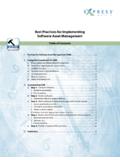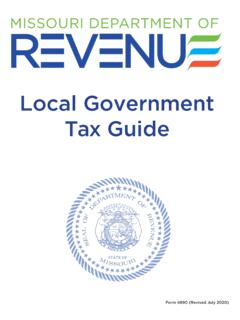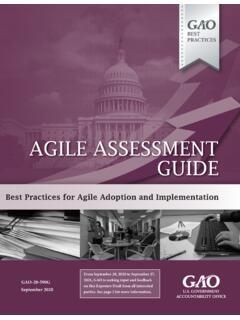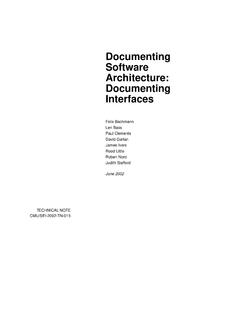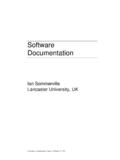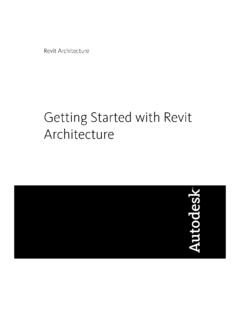Transcription of Six Steps to Completing a Software Audit and Ensuring ...
1 Six Steps to Completing a Software Audit and Ensuring Compliance While Saving MoneyA Guide to Assessing Vulnerabilities and Ensuring Ongoing Software License Compliance 200 West Mercer Street | Suite E300 | Seattle, WA 98119 Phone + | Fax + | Six Steps to Completing a Software Audit and Ensuring Compliance While Saving Money Am I compliant? is a question more and more companies are recognizing they need to answer with absolute certainty. Illegal Software use costs Software publishers billions of dollars each year, and Software vendors, along with organizations such as the Business Software Alliance (BSA) and Software and Information Industry Association (SIIA), are stepping up activities to find and prosecute organizations guilty of Software piracy.
2 2 The goal of this six-step guide is to help organizations assess their vulnerabilities with respect to license compliance, ensure compliance on an ongoing basis, and offset the costs of achieving compliance with savings associated with identifying and eliminating licenses that are not being used. Recent SIIA Piracy Settlements Petroleum Heat & Power Corp., a distributor of home, heating oil, heating and cooling equipment and maintenance, paid $217,570 to settle piracy claims about two and a half times the retail price of the pirated Microsoft Software installed on its systems. Preventative Maintenance Company Inc., a provider of predictive technology including vibration and infrared analysis of machinery, settled for $156,137 based on the unlicensed Software on their systems from Microsoft, Adobe, Symantec, and Nero AG.
3 Ciberlynx, a Web hosting company, paid damages of $130,000 based on their possession of multiple unlicensed Software titles published by Microsoft, Adobe, and Symantec. Software copyright infringement is serious business, the consequences of which can range anywhere from a chaotic scramble to regain compliance, to piracy penalties of up to $150,000 per infringed-upon title (not including legal fees), to demands that a company terminate use of the Software until corrective action is taken a consequence that can virtually shut down a business operations. And it's not just money on the line - your company's reputation and goodwill are also at stake. Many organizations believe the risk of being audited is too small to justify the cost of establishing effective controls to ensure compliance.
4 However, a comprehensive Software Audit that examines not only license compliance, but also Software utilization, often yields more in license savings than the cost of both implementing such controls and correcting license deficits. A recent survey conducted by Gartner Research revealed that 35% of companies had experienced an on-site Audit from a major Software vendor. Step One: Conduct a Software Inventory In order to understand your Software compliance status, you must first answer the question, What do we have, and where is it? A complete Software inventory provides a foundation for you to not only assess your current license position, but also to ensure ongoing license compliance. It is therefore crucial that it be performed thoroughly and accurately.
5 Conducting a manual inventory is rarely practical; it is time-consuming, error-prone, and difficult to keep up-to-date. For the purposes of this guide, we will therefore strongly recommend that a Software asset management tool be used. For compliance purposes, it is of utmost importance to ensure that, at the most basic level, the tool collects data on installed Software and analyzes the information from a licensing perspective by comparing collected inventory data with Software purchasing records. If you don t already have a Software asset management tool that provides such functionality, be sure to select a product that provides: Comprehensive application recognition functionality, so you or your IT staff don t spend excessive time trying to identify countless unrecognized or cryptically named files; The ability to import purchasing data (for example, number of licenses, purchase price, purchase date, PO or invoice number, maintenance expiration date) and reconcile it with installed Software ; Reports that distinguish between Software version numbers, installations that are part of different suites (for example, Microsoft Office Professional vs.)
6 Microsoft Office Standard), and file executables with the same name (for example, SQL and MSDE); The ability to collect data on remote PCs; Compliance reports that provide meaningful, detailed information that can be acted upon immediately; Software usage metering functionality, so you can: o Monitor peak usage and enforce compliance for concurrently-licensed applications o Identify licenses not being used (this will be discussed in greater detail in Step Two) In addition to helping you determine whether your organization is compliant, the inventory functionality found within your license management tool can also tell you what applications are installed that may pose a risk to security or productivity, and give you information to help you determine whether or not your organization could benefit from establishing Software standards.
7 Step Two: Meter Application Usage After performing a Software inventory, we suggest you begin collecting Software usage data right away, so that you have more complete information with which to make subsequent purchasing decisions, as well as offset the costs of truing up with savings on unused Software . Step Three, which involves gathering Software licensing documentation (discussed in Step Three) can be fairly time-consuming, and you ll more than likely be able to establish a good base of usage information during this process. Software usage tracking tools, or Software metering tools, are designed to collect Software usage information across an organization. By identifying unused or underutilized licenses, you can save significantly on licensing costs by either reallocating the unused licenses to users that truly need them or by terminating maintenance on them.
8 As previously discussed, your Software asset management tool will ideally have both inventory and metering functionality, so that licensing information can be simultaneously reconciled with both Software inventory and usage data. We recommend collecting usage data for at least 30 (and ideally 60) days to obtain an 3 According to studies conducted by Morgan Stanley and AMR Research, only 12% of CIOs believe they had unused CRM licenses; however, in reality, MOST companies with CRM Software had implemented fewer than 50% of their licenses. accurate representation of utilization in your environment, as some applications by their nature are used less frequently than others or only at certain times of the month. For environments with concurrently licensed applications, metering functionality is critical not only to collect and analyze Software usage, but also evaluate and enforce compliance.
9 For example, if your organization licenses computer-aided design (CAD) Software based on the agreement that no more than 35 licenses may be in use at any given time, a metering tool can prohibit the 36th user from launching that application, and notify that user know when a license becomes available. Step Three: Gather Software Licensing Data The next question you ll need to answer when conducting a Software Audit is What Software licenses does my organization own? Answering this question requires collecting Software licensing information for the Software inventoried in Step One. For many, this is the most difficult step in the Software Audit process. A good place to begin is with your purchasing records. Gather invoices and organize them according to Software manufacturer.
10 You may need to contact Software publishers and/or resellers to obtain complete purchasing details. Centralize all the documentation into digital format that can be imported into or referenced by the tool for reconciliation against installed licenses and usage volume. At a very minimum, you will want to track the exact number of licenses purchased for each Software title, but it may also be valuable to track other details such as dates of purchase, purchase prices, maintenance expiration dates, and PO or invoice numbers for additional tracking and analysis. Step Four: Adjust License Counts Now that you have gathered both Software inventory and usage data, you can reconcile your purchasing information with the number of licenses installed and the frequency with which those applications are utilized.
